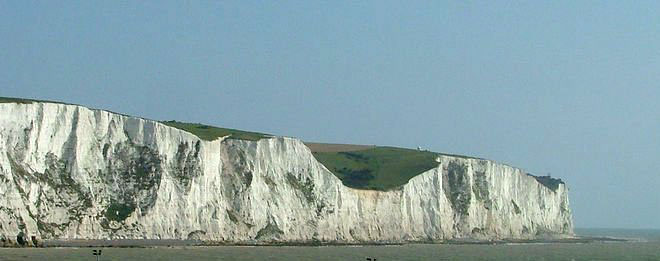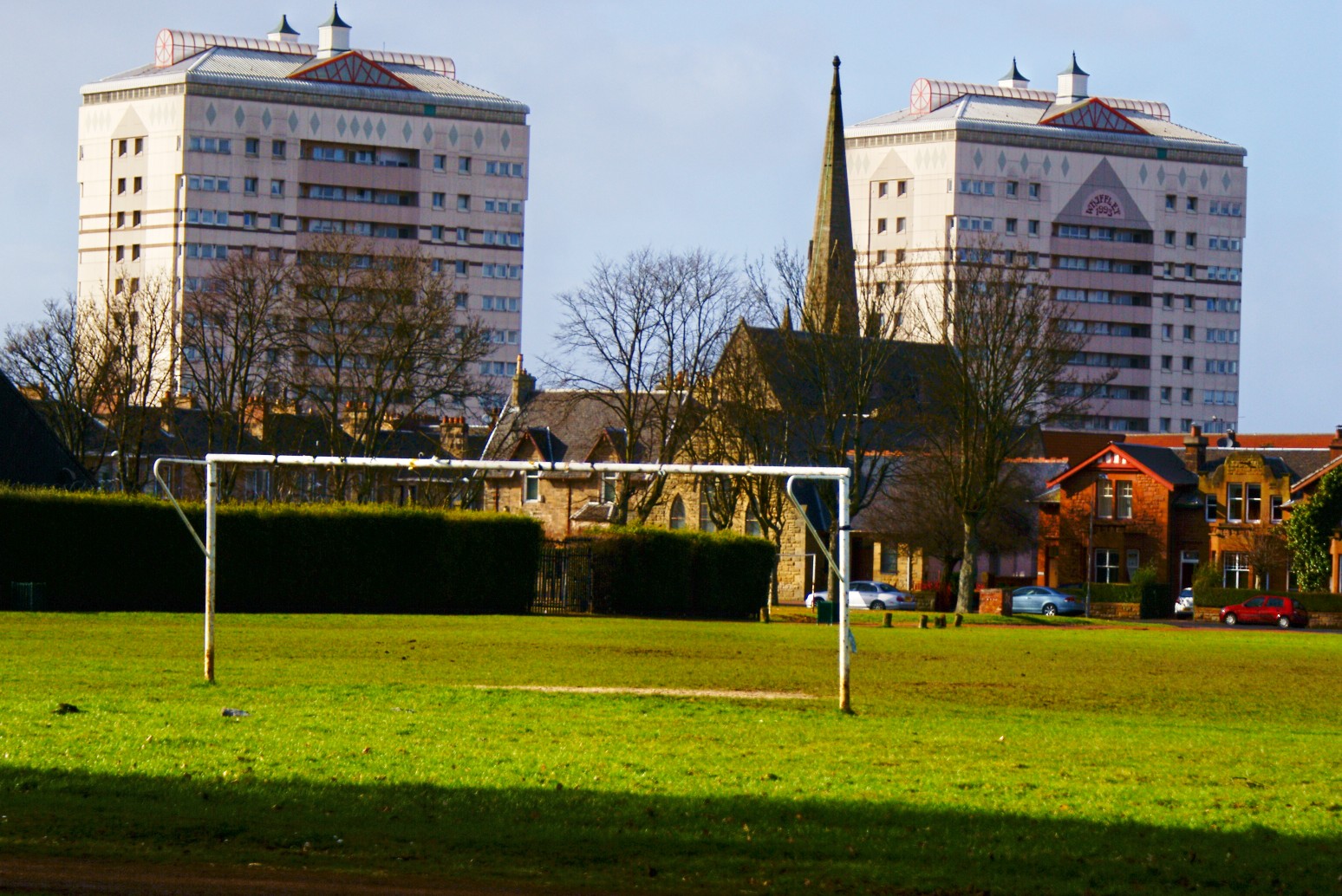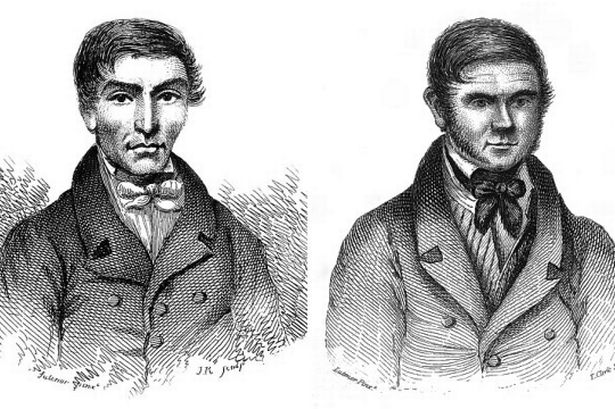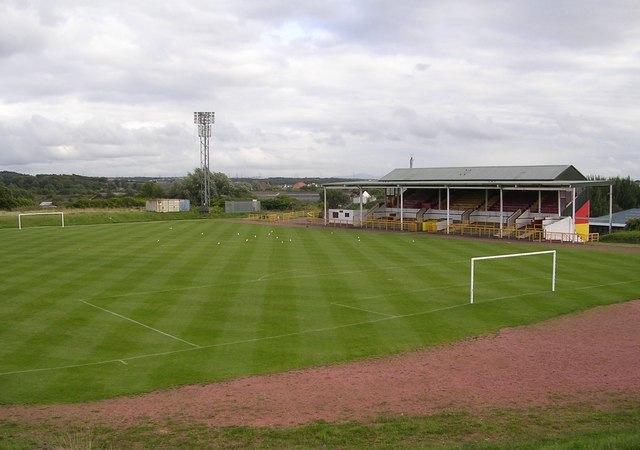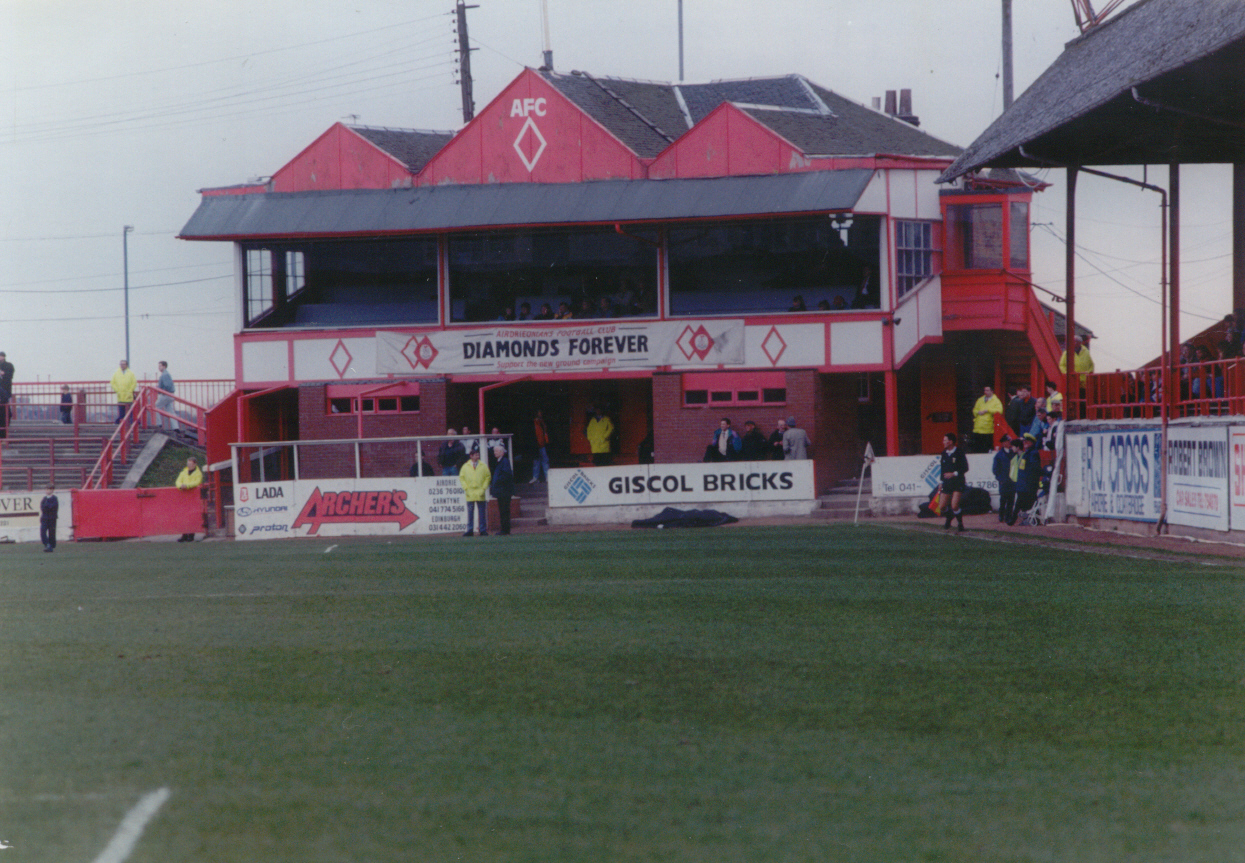|
Meadow Park (Coatbridge)
Meadow Park was a football ground in the Whifflet area of Coatbridge, Scotland. It was the home ground of Albion Rovers from 1882 until 1919. History Albion Rovers moved to Meadow Park from their previous ground, Cowheath Park, in 1882.Paul Smith & Shirley Smith (2005) ''The Ultimate Directory of English & Scottish Football League Grounds Second Edition 1888–2005'', Yore Publications, p196 The new ground was sandwiched between two railway lines, and a grandstand and pavilion were erected on the western side of the pitch. During the club's tenure at the ground the roof of the grandstand was blown off twice. Albion joined the Scottish Football League (SFL) in 1903, and the first SFL match was played at the ground on 15 August 1903, a 2–2 draw with Leith Athletic in front of 2,000 spectators. The club's highest recorded league attendance at the ground was 4,000 for a 3–1 win over Cowdenbeath on 3 January 1914. In 1919 the club moved to Cliftonhill. As the SFL had been susp ... [...More Info...] [...Related Items...] OR: [Wikipedia] [Google] [Baidu] |
Coatbridge
Coatbridge ( sco, Cotbrig or Coatbrig, gd, Drochaid a' Chòta) is a town in North Lanarkshire, Scotland, about east of Glasgow city centre, set in the central Lowlands. Along with neighbouring town Airdrie, Coatbridge forms the area known as the Monklands (population approximately 90,000 including outlying settlements), often considered to be part of the Greater Glasgow urban area – although officially they have not been included in population figures since 2016 due to small gaps between the Monklands and Glasgow built-up areas. In the last years of the 18th century, the area developed from a loose collection of hamlets into the town of Coatbridge. The town's development and growth have been intimately connected with the technological advances of the Industrial Revolution, and in particular with the hot blast process. Coatbridge was a major Scottish centre for iron works and coal mining during the 19th century and was then described as 'the industrial heartland of Scotland' ... [...More Info...] [...Related Items...] OR: [Wikipedia] [Google] [Baidu] |
Albion Rovers F
Albion is an alternative name for Great Britain. The oldest attestation of the toponym comes from the Greek language. It is sometimes used poetically and generally to refer to the island, but is less common than 'Britain' today. The name for Scotland in most of the Celtic languages is related to Albion: ''Alba'' in Scottish Gaelic, ''Albain'' (genitive ''Alban'') in Irish, ''Nalbin'' in Manx and ''Alban'' in Welsh and Cornish. These names were later Latinised as ''Albania'' and Anglicised as ''Albany'', which were once alternative names for Scotland. ''New Albion'' and ''Albionoria'' ("Albion of the North") were briefly suggested as names of Canada during the period of the Canadian Confederation. Sir Francis Drake gave the name New Albion to what is now California when he landed there in 1579. Etymology The toponym is thought to derive from the Greek word , Latinised as (genitive ). It was seen in the Proto-Celtic nasal stem * (oblique *) and survived in Old Irish as ... [...More Info...] [...Related Items...] OR: [Wikipedia] [Google] [Baidu] |
Association Football
Association football, more commonly known as football or soccer, is a team sport played between two teams of 11 players who primarily use their feet to propel the ball around a rectangular field called a pitch. The objective of the game is to score more goals than the opposition by moving the ball beyond the goal line into a rectangular framed goal defended by the opposing side. Traditionally, the game has been played over two 45 minute halves, for a total match time of 90 minutes. With an estimated 250 million players active in over 200 countries, it is considered the world's most popular sport. The game of association football is played in accordance with the Laws of the Game, a set of rules that has been in effect since 1863 with the International Football Association Board (IFAB) maintaining them since 1886. The game is played with a football that is in circumference. The two teams compete to get the ball into the other team's goal (between the posts and under t ... [...More Info...] [...Related Items...] OR: [Wikipedia] [Google] [Baidu] |
Whifflet
Whifflet ( sco, The Whufflit, gd, Magh na Cruithneachd) is now a suburb of Coatbridge, Scotland, which once formed its own distinctive village. It is referred to locally as 'The Whifflet' (and pronounced ''whiff-lit''). Presently located in the North Lanarkshire Council area it was originally known as wheat flats (hence the vernacular pronunciation) but over time the name appears to have developed into Whifflet. It is dominated by its main street, Whifflet Street, which has many shops including an old sweet shop Tommy Tangos, pubs and bookmakers and is towered over by the post-war built Calder flats. The two most prominent tower blocks are on Whifflet St. Whifflet is an area of Coatbridge which, historically, has been the centre of a lot of mining activity. One of the Whifflet pits in the 19th century reached a depth of 330 feet underground. Albion Rovers football club was originally based in the Whifflet area at Meadow Park. Notable residents have included Jock Cunningham a C ... [...More Info...] [...Related Items...] OR: [Wikipedia] [Google] [Baidu] |
Scottish Football League
The Scottish Football League (SFL) was a league featuring professional and semi-professional football clubs mostly from Scotland.One club, Berwick Rangers, is based in the town of Berwick-upon-Tweed, which is located approximately 4 km south of the Anglo-Scottish border. From its foundation in 1890 until the breakaway Scottish Premier League (SPL) was formed in 1998, the SFL was the top level of football in Scotland. After 1998, the SFL represented levels 2 to 4 of the Scottish football league system. In June 2013, the SFL merged with the SPL to form the Scottish Professional Football League. The SFL was associated with a title sponsor from the 1985–86 season. As this sponsor changed over the years the league was known in turn as the Fine Fare League, B&Q League, Bell's Scottish Football League and finally as the Irn-Bru Scottish Football League. The SFL also organised two knock-out cup competitions, the Scottish League Cup and the Scottish Challenge Cup. History Forma ... [...More Info...] [...Related Items...] OR: [Wikipedia] [Google] [Baidu] |
Leith Athletic F
Leith (; gd, Lìte) is a port area in the north of the city of Edinburgh, Scotland, founded at the mouth of the Water of Leith. In 2021, it was ranked by '' Time Out'' as one of the top five neighbourhoods to live in the world. The earliest surviving historical references are in the royal charter authorising the construction of Holyrood Abbey in 1128 in which it is termed ''Inverlet'' (Inverleith). After centuries of control by Edinburgh, Leith was made a separate burgh in 1833 only to be merged into Edinburgh in 1920. Leith is located on the southern coast of the Firth of Forth and lies within the City of Edinburgh Council area; since 2007 it has formed one of 17 multi-member wards of the city. History As the major port serving Edinburgh, Leith has seen many significant events in Scottish history. First settlement The earliest evidence of settlement in Leith comes from several archaeological digs undertaken in The Shore area in the late 20th century. Amongst the f ... [...More Info...] [...Related Items...] OR: [Wikipedia] [Google] [Baidu] |
Cowdenbeath F
Cowdenbeath (; sco, Coudenbeith) is a town and burgh in west Fife, Scotland. It is north-east of Dunfermline and north of the capital, Edinburgh. The town grew up around the extensive coalfields of the area and became a police burgh in 1890. According to a 2008 estimate, the town has a population of 14,081. The wider civil parish of Beith has a population of 17,351 (in 2011).Census of Scotland 2011, Table KS101SC – Usually Resident Population, publ. by National Records of Scotland. Web site http://www.scotlandscensus.gov.uk/ retrieved March 2016. See “Standard Outputs”, Table KS101SC, Area type: Civil Parish 1930 Toponymy The first element of the town's name comes from the surname ''Colden'' or ''Cowden'', often indicated in early forms as a possessor by the addition of , for example ''Cowdennyes Baith''. ''Beath'', the name of the wider parish, is from the Gaelic , meaning birch. History The earliest indication of human activity in the immediate vicinity of the curre ... [...More Info...] [...Related Items...] OR: [Wikipedia] [Google] [Baidu] |
Cliftonhill
Cliftonhill Stadium, commonly known as Cliftonhill and currently 'The Reigart Stadium' for sponsorship purposes, is a football stadium in Coatbridge, North Lanarkshire, Scotland. It is the home ground of Scottish Professional Football League team Albion Rovers F.C., who have played at the ground since 1919. History Rovers moved from Meadow Park to Cliftonhill in 1919, with the new ground opening on 25 December. The Main Stand sits high on a rise above Main Street and was built in the same season as their only Scottish Cup Final appearance. A roof extension over the paddock (a standing area in front of the stand) was added in 1994. Cliftonhill's record attendance was set on 8 February 1936 when 27,381 watched the visit of Rangers. Floodlighting was installed at the ground in October 1968. During the 1990s it looked likely that Albion Rovers would leave Cliftonhill to share a stadium with local rivals Airdrieonians. However opposition from Rovers fans, the local population an ... [...More Info...] [...Related Items...] OR: [Wikipedia] [Google] [Baidu] |
Vale Of Leven F
A vale is a type of valley. Vale may also refer to: Places Georgia * Vale, Georgia, a town in the Samtskhe-Javakheti region Norway * Våle, a historic municipality Portugal * Vale (Santa Maria da Feira), a former civil parish in the municipality of Santa Maria da Feira Romania * Vale, a village in Aluniş Commune, Cluj County * Vale, a village in Toplița city, Harghita County * Vale ( hu, Vále, link=no), a village in Săliște town, Sibiu County United Kingdom * Vale, Guernsey, a parish in Guernsey * Vale of Glamorgan, a county borough in South Wales, commonly referred to as "The Vale" * Vale of Leven, an area of West Dunbartonshire, Scotland, also knownas "The Vale" United States * Vale, Avery County, North Carolina * Vail, Colorado * Vale, Lincoln County, North Carolina * Vale, Oregon * Vale, South Dakota * Vale, West Virginia * Vale Summit, Maryland * Vale Township, Butte County, South Dakota * Vale Tunnel, Raytown, Missouri * Lyman Estate, known as "The Vale", Waltha ... [...More Info...] [...Related Items...] OR: [Wikipedia] [Google] [Baidu] |
1919–20 Scottish Football League
Statistics of the Scottish Football League in season 1919–20. The competition was won by Rangers by three points over nearest rival Celtic. League table Results See also *1919–20 in Scottish football The 1919–20 season was the 47th season of competitive football in Scotland and the 30th season of the Scottish Football League. The number of teams in the Scottish League was increased from 18 to 22. Those clubs who were asked to retire for geo ... References {{DEFAULTSORT:Scottish Football League 1919-20 1919-20 ... [...More Info...] [...Related Items...] OR: [Wikipedia] [Google] [Baidu] |
Broomfield Park
Broomfield Park was a football stadium in Airdrie, North Lanarkshire, home of Airdrieonians from 1892 until it was closed after the 1993–94 football season. Airdrieonians F.C. was formed in 1878 and the club opened Broomfield in 1892. The Broomfield corner pavilion was built in 1907. After winning the 1923–24 Scottish Cup, the club built a main stand, adjacent to the pavilion. The record attendance at Broomfield Park was 24,000, in a Scottish Cup quarter-final match against Hearts on 8 March 1952. Floodlights were installed in 1956, and a roof was built over the Enclosure (opposite the main stand) in 1959. The ground was unusually narrow, at just wide, and was built in a natural hollow. These physical features, and the proximity of the stands to the pitch, meant that Broomfield had a particularly raucous and oppressive atmosphere when crowded, which visiting clubs disliked but was advantageous to the home side. Airdrieonians first explored the options for moving from B ... [...More Info...] [...Related Items...] OR: [Wikipedia] [Google] [Baidu] |
Airdrie, North Lanarkshire
Airdrie (; sco, Airdrie; gd, An t-Àrd Ruigh) is a town in North Lanarkshire, Scotland. It lies on a plateau roughly 400 ft (130 m) above sea level, and is approximately 12 miles (19 km) east of Glasgow city centre. , the town had a population of around 37,130. Historically part of Lanarkshire, Airdrie forms part of a conurbation with its neighbour Coatbridge, in what is commonly known as the Monklands, formerly a district. (population approximately 90,000 including outlying settlements). Name Airdrie's name first appeared in the Register of the Great Seal of Scotland (Registrum Magni Sigilii Regum Scotorum) in 1373 as Ardre. By 1546 it had become Ardry and by 1587 it was known as Ardrie. In 1630 it finally appeared in the Register as Airdrie. Given the topography of the area, the most likely interpretation is that the name derives from the Gaelic ''An Àrd Ruigh'' meaning a level height or high pasture land. Another possibility is that it is from the Gaelic ''An Àrd ... [...More Info...] [...Related Items...] OR: [Wikipedia] [Google] [Baidu] |

